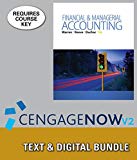
a)
Bonds Payable: Bonds payable are referred to long-term debts of the business, issued to various lenders known as bondholders, generally in multiples of $1,000 per bond, to raise fund for financing the operations.
Premium on bonds payable: It occurs when the bonds are issued at a high price than the face value.
Effective-interest method of amortization: It is an amortization model that apportions the amount of bond discount or premium based on the market interest rate.
Present Value: The value of today’s amount expected to be paid or received in the future at a compound interest rate is called as present value.
To Calculate: The amount of cash proceeds (present value) from the sale of the bonds.
b)
To Calculate: The amount of premium to be amortized for the first semiannual interest payment period.
c)
To Calculate: The amount of premium to be amortized for the second semiannual interest payment period.
d)
The amount of bond interest expense for first year.
Trending nowThis is a popular solution!

Chapter 12 Solutions
Bundle: Financial & Managerial Accounting, 13th + Working Papers, Volume 1, Chapters 1-15 For Warren/reeve/duchac’s Corporate Financial Accounting, ... 13th + Cengagenow™v2, 2 Terms Access Code
- Harriet Manufacturing's budget for the coming year includes $780,000 for manufacturing overhead, 85,000 hours of direct labor, and 520,000 hours of machine time. If Harriet applies overhead using a predetermined rate based on machine hours, what amount of overhead will be assigned to a unit of output which requires 0.78 machine hours and 0.32 labor hours to complete?arrow_forwardPlease provide the accurate answer to this general accounting problem using valid techniques.arrow_forwardHello tutor please given General accounting question answer do fast and properly explain all answerarrow_forward
- NextGen Cloud Services reported sales revenue of $89,200 on its income statement. The accounts receivable balance decreased by $4,700 over the year. Determine the amount of cash received from customers.arrow_forwardProvide Accurate Answerarrow_forwardDetermine company's other comprehensive incomearrow_forward
- Right Answerarrow_forwardThe ending inventory of Steven Wholesale Ltd. is $46,000. If the beginning inventory was $69,000 and goods available for sale totaled $115,000, what is the cost of goods sold?arrow_forwardPlease provide the accurate answer to this general accounting problem using appropriate methods.arrow_forward
- Can you provide a detailed solution to this financial accounting problem using proper principles?arrow_forwardPlease provide the correct answer to this general accounting problem using valid calculations.arrow_forwardThe owner's equity at the beginning of the period for Valencia Partners was $68,000. At the end of the period, assets totaled $145,000, and liabilities were $42,000. If the owner made an additional investment of $15,000 and withdrew $11,000 during the period, what is the net income or (net loss) for the period?arrow_forward

 AccountingAccountingISBN:9781337272094Author:WARREN, Carl S., Reeve, James M., Duchac, Jonathan E.Publisher:Cengage Learning,
AccountingAccountingISBN:9781337272094Author:WARREN, Carl S., Reeve, James M., Duchac, Jonathan E.Publisher:Cengage Learning, Accounting Information SystemsAccountingISBN:9781337619202Author:Hall, James A.Publisher:Cengage Learning,
Accounting Information SystemsAccountingISBN:9781337619202Author:Hall, James A.Publisher:Cengage Learning, Horngren's Cost Accounting: A Managerial Emphasis...AccountingISBN:9780134475585Author:Srikant M. Datar, Madhav V. RajanPublisher:PEARSON
Horngren's Cost Accounting: A Managerial Emphasis...AccountingISBN:9780134475585Author:Srikant M. Datar, Madhav V. RajanPublisher:PEARSON Intermediate AccountingAccountingISBN:9781259722660Author:J. David Spiceland, Mark W. Nelson, Wayne M ThomasPublisher:McGraw-Hill Education
Intermediate AccountingAccountingISBN:9781259722660Author:J. David Spiceland, Mark W. Nelson, Wayne M ThomasPublisher:McGraw-Hill Education Financial and Managerial AccountingAccountingISBN:9781259726705Author:John J Wild, Ken W. Shaw, Barbara Chiappetta Fundamental Accounting PrinciplesPublisher:McGraw-Hill Education
Financial and Managerial AccountingAccountingISBN:9781259726705Author:John J Wild, Ken W. Shaw, Barbara Chiappetta Fundamental Accounting PrinciplesPublisher:McGraw-Hill Education





